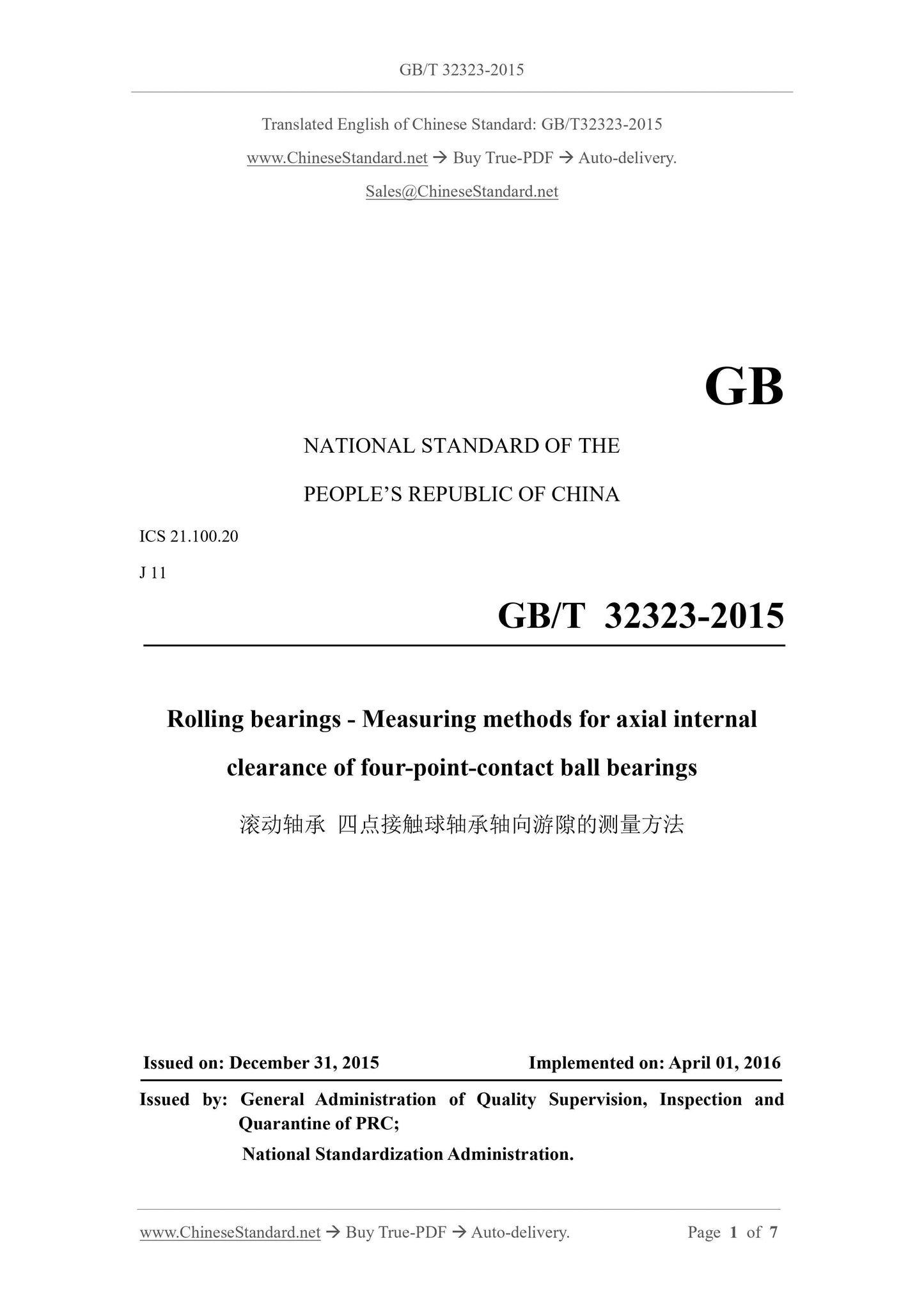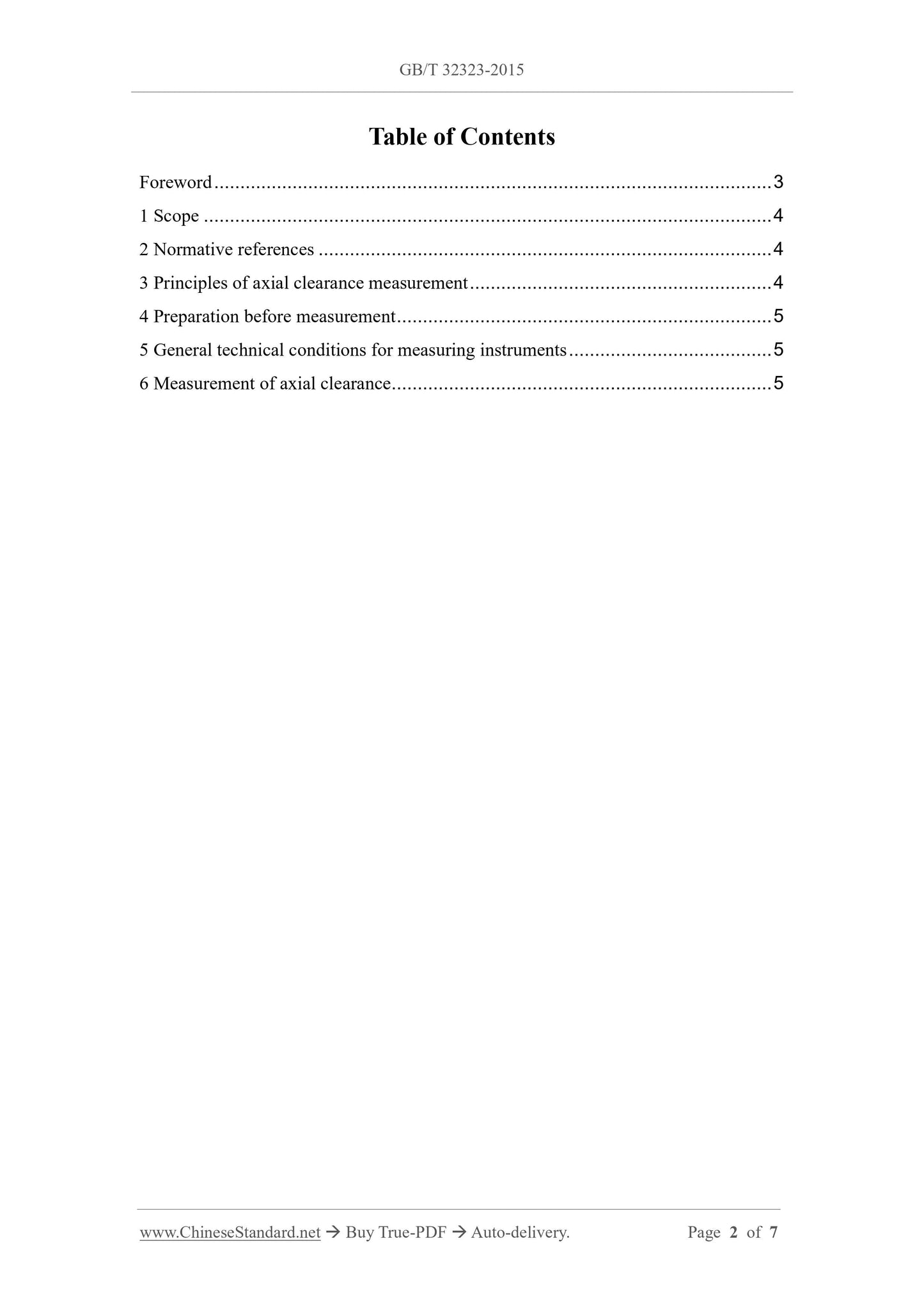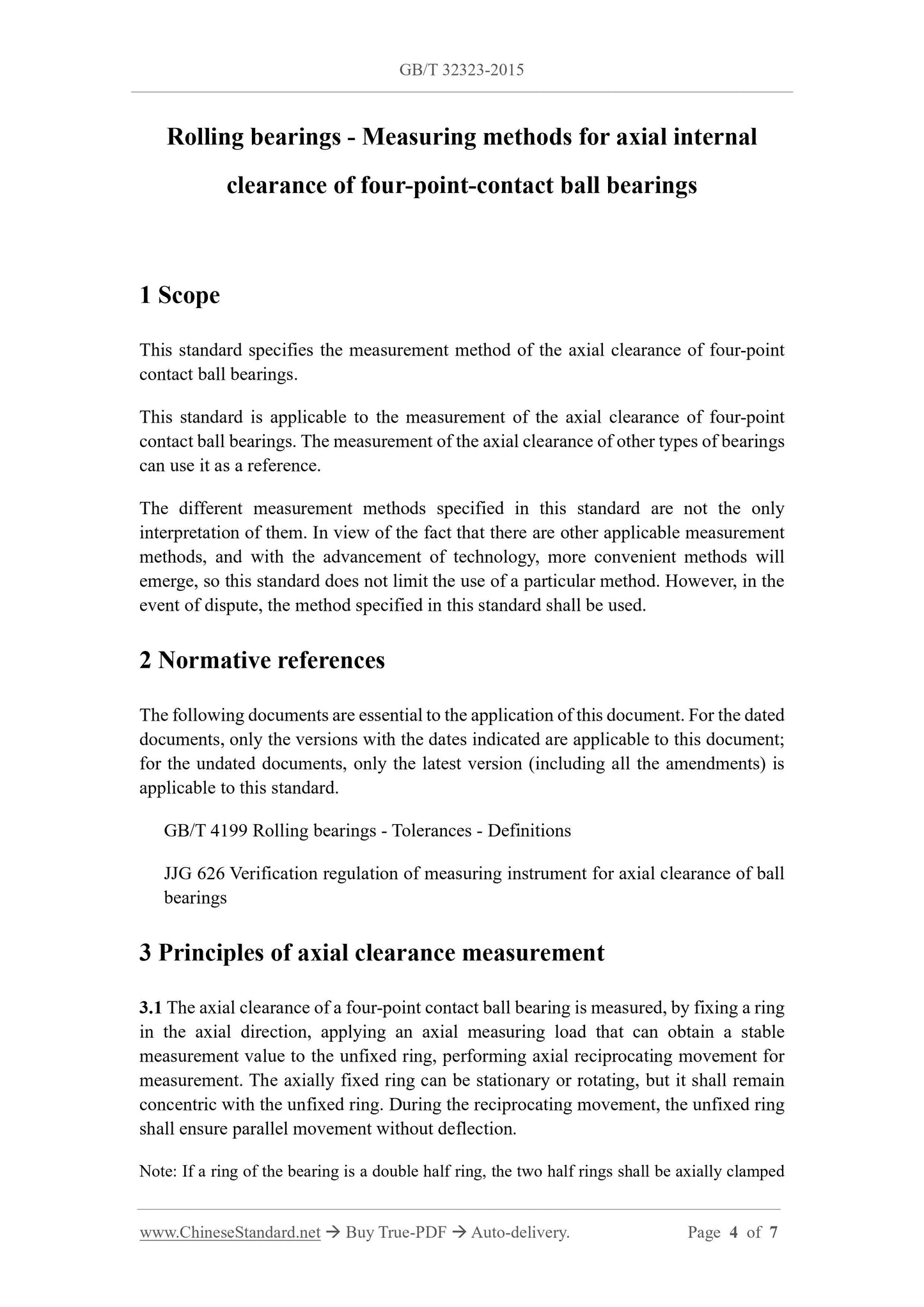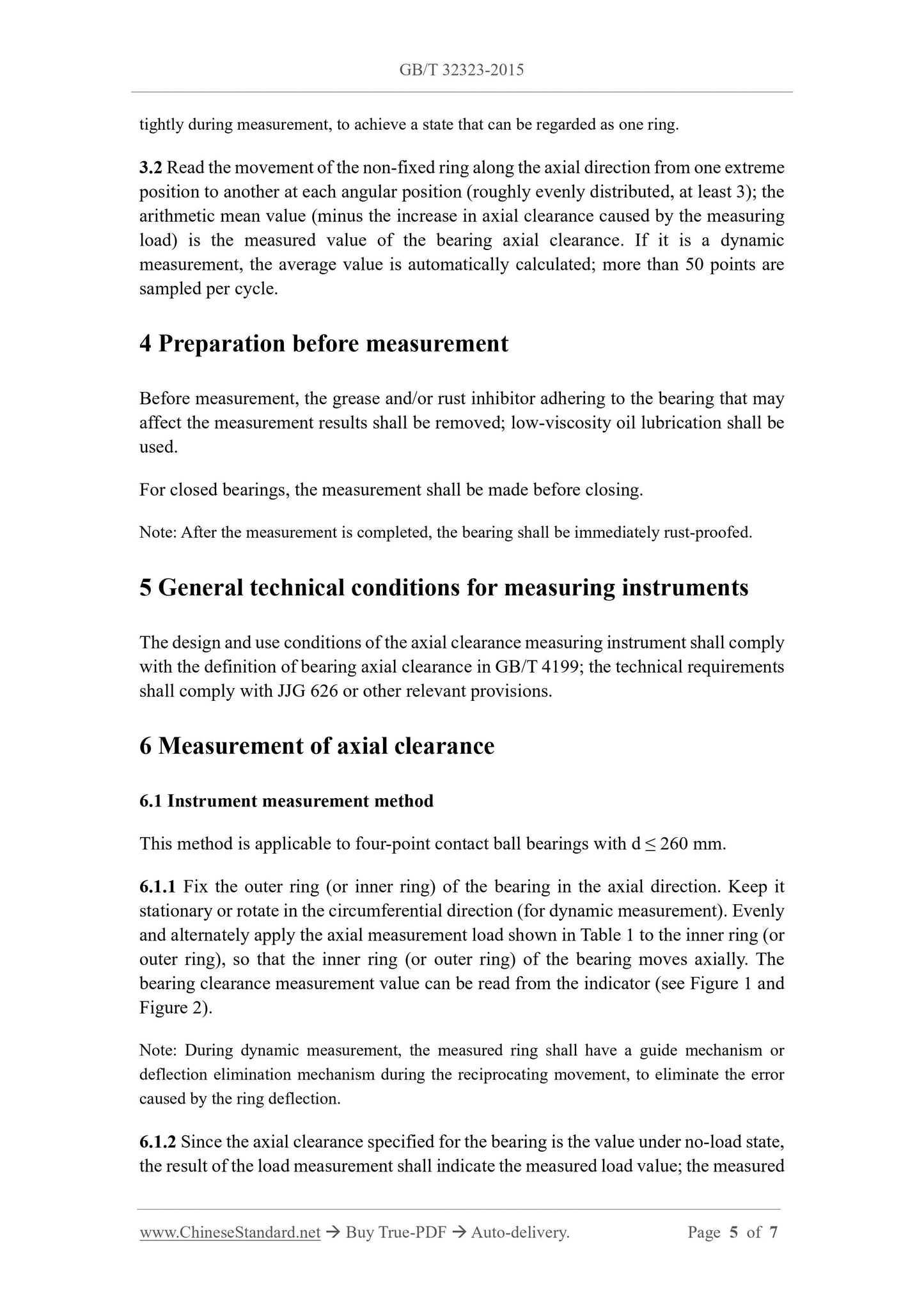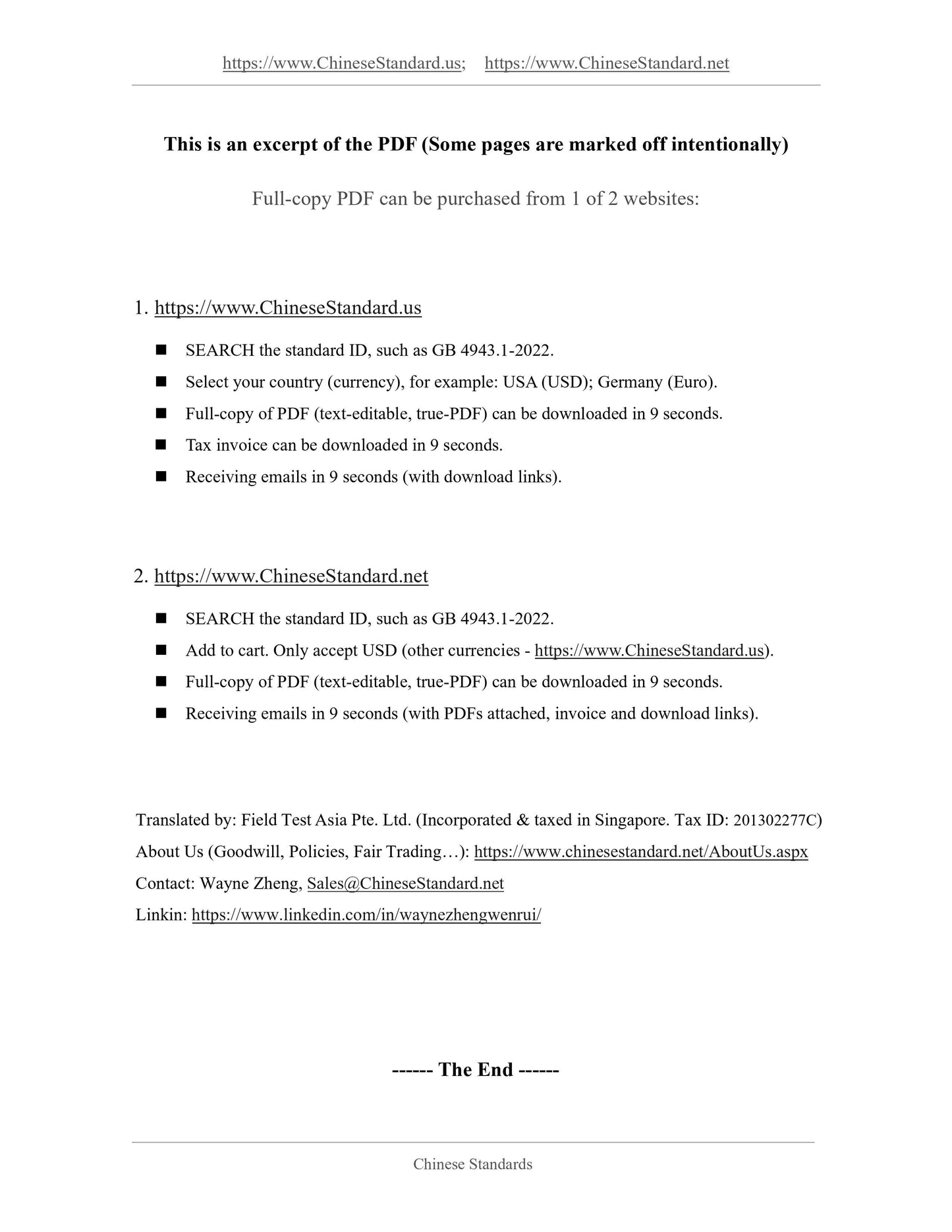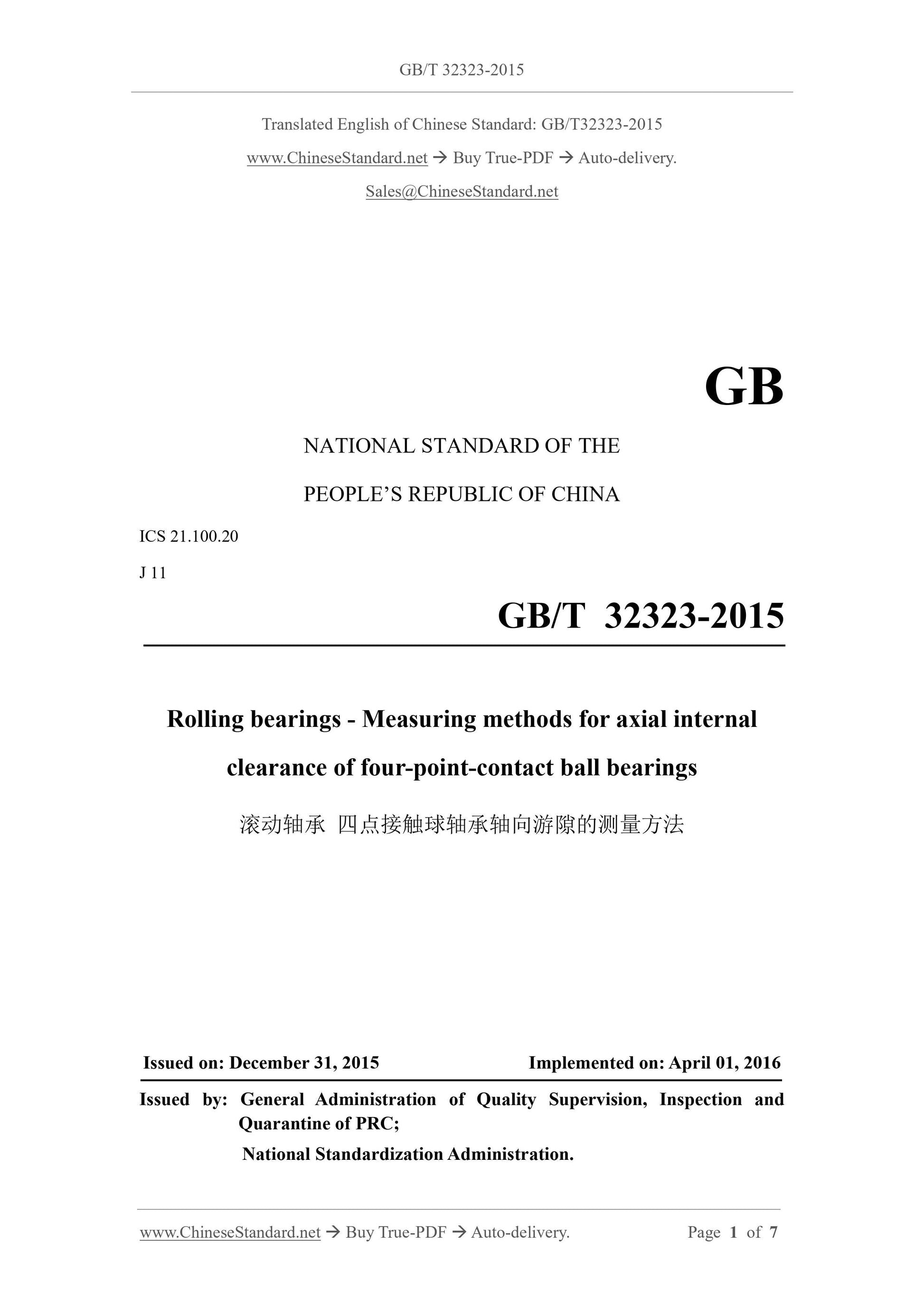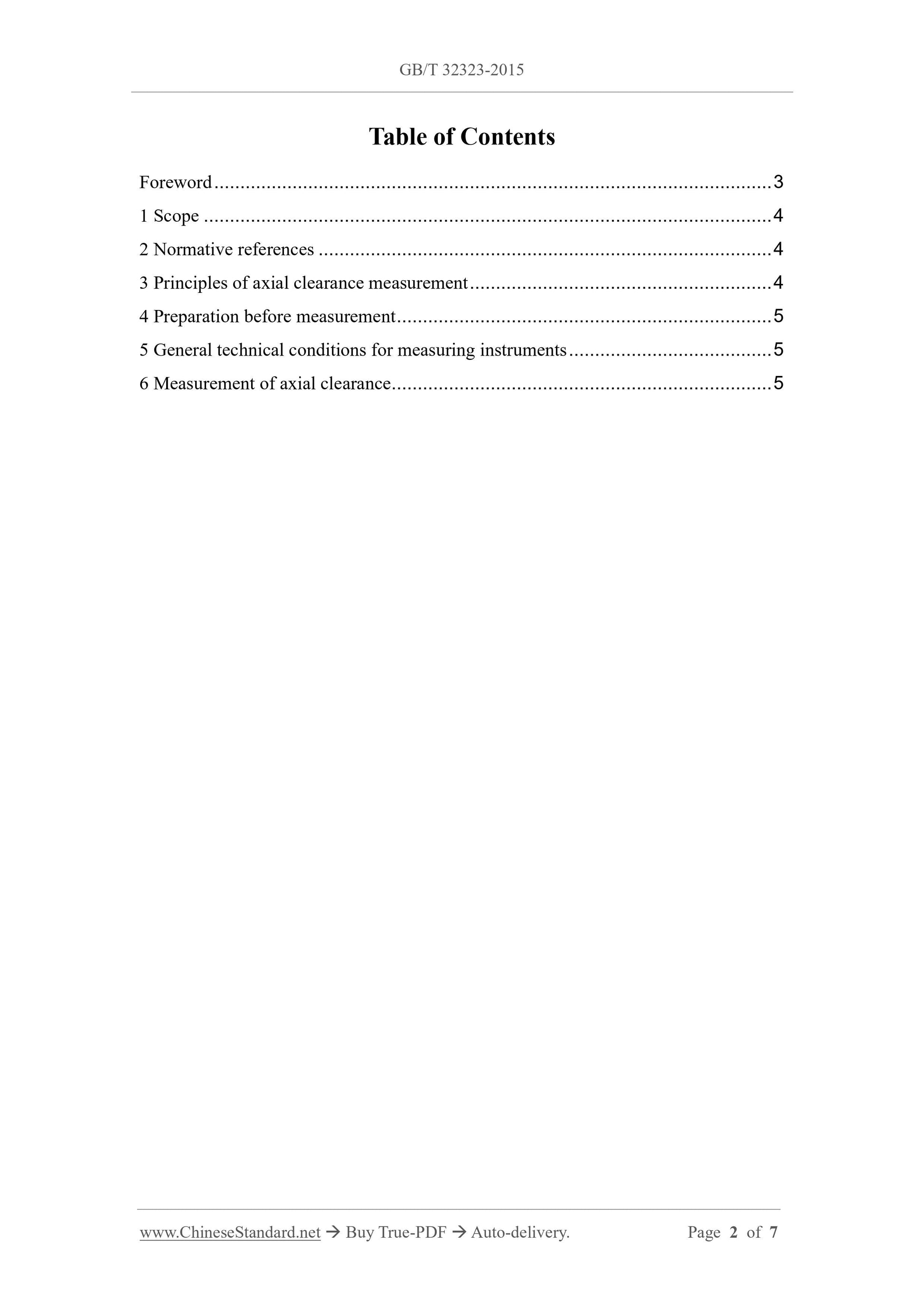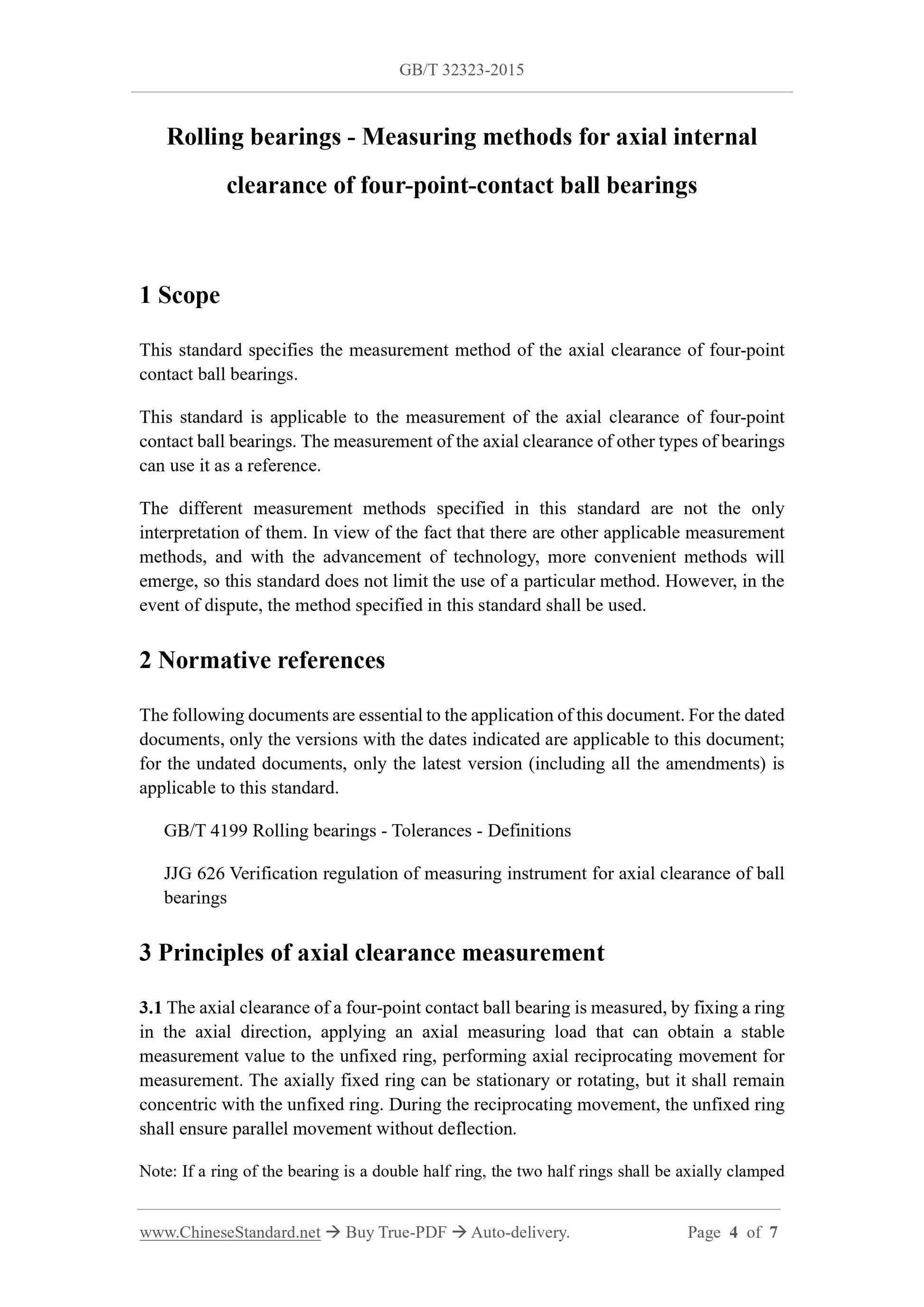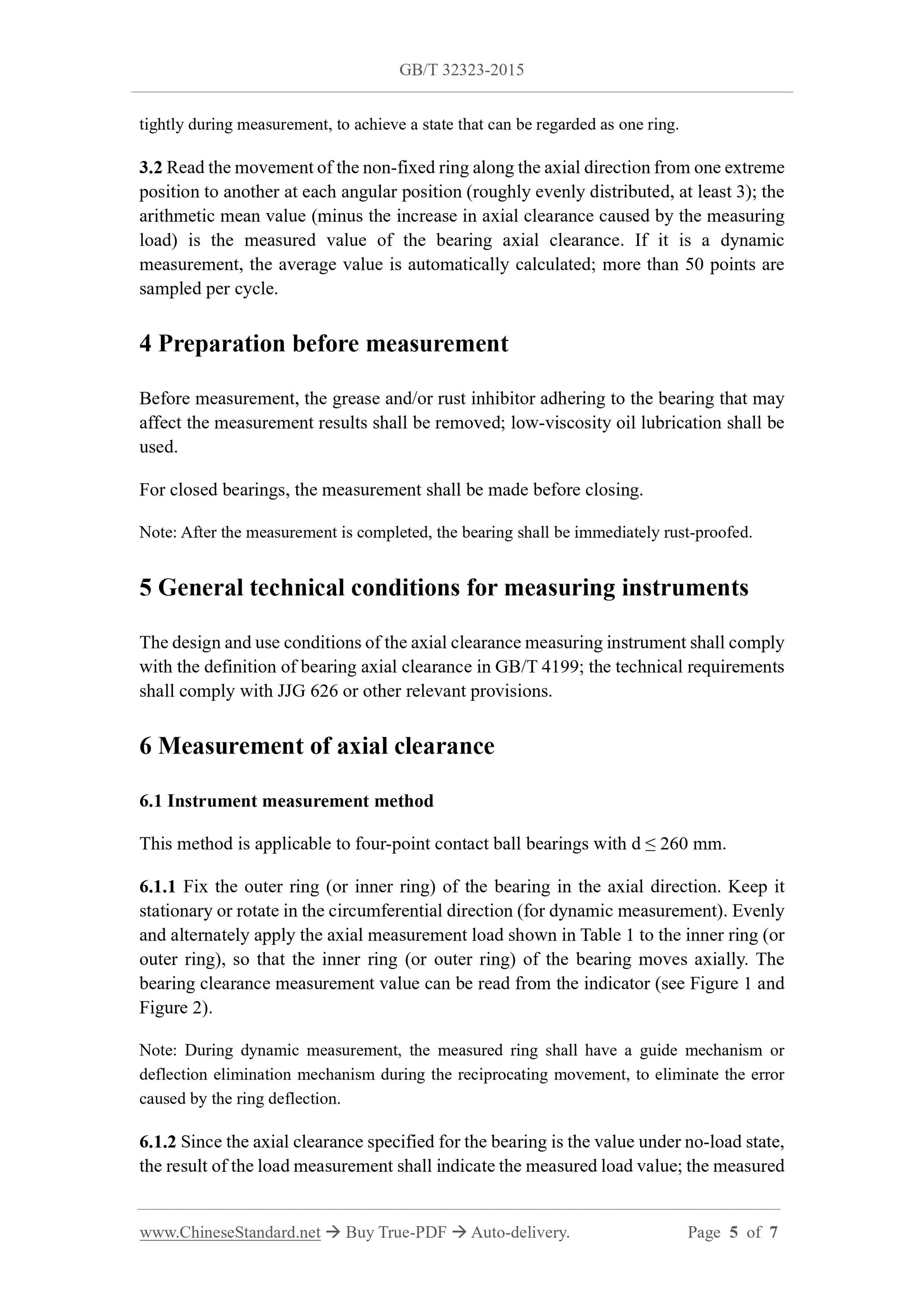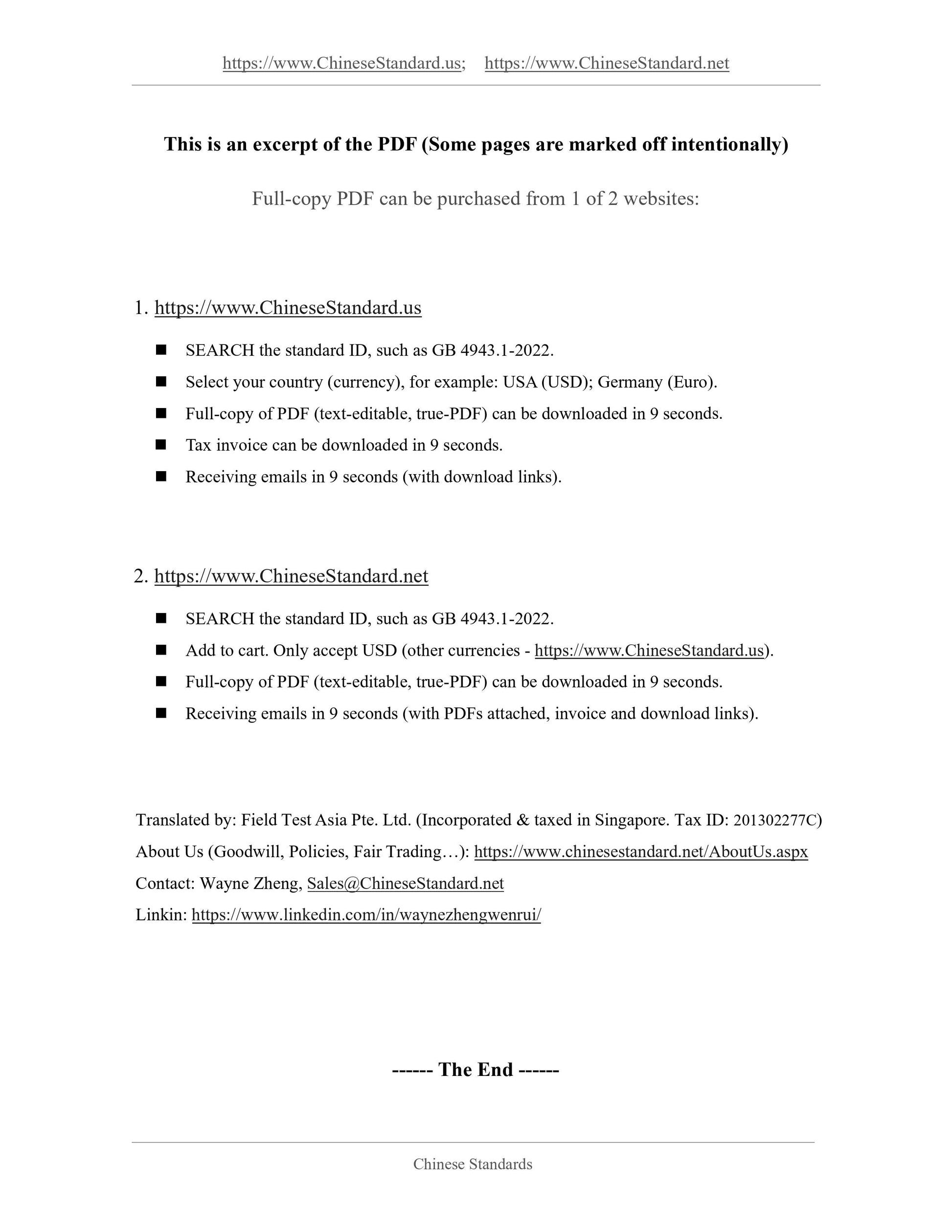1
/
of
5
www.ChineseStandard.us -- Field Test Asia Pte. Ltd.
GB/T 32323-2015 English PDF (GB/T32323-2015)
GB/T 32323-2015 English PDF (GB/T32323-2015)
Regular price
$105.00
Regular price
Sale price
$105.00
Unit price
/
per
Shipping calculated at checkout.
Couldn't load pickup availability
GB/T 32323-2015: Rolling bearings - Measuring methods for axial internal clearance of four-point-contact ball bearings
Delivery: 9 seconds. Download (and Email) true-PDF + Invoice.Get Quotation: Click GB/T 32323-2015 (Self-service in 1-minute)
Newer / historical versions: GB/T 32323-2015
Preview True-PDF
Scope
This standard specifies the measurement method of the axial clearance of four-pointcontact ball bearings.
This standard is applicable to the measurement of the axial clearance of four-point
contact ball bearings. The measurement of the axial clearance of other types of bearings
can use it as a reference.
The different measurement methods specified in this standard are not the only
interpretation of them. In view of the fact that there are other applicable measurement
methods, and with the advancement of technology, more convenient methods will
emerge, so this standard does not limit the use of a particular method. However, in the
event of dispute, the method specified in this standard shall be used.
Basic Data
| Standard ID | GB/T 32323-2015 (GB/T32323-2015) |
| Description (Translated English) | Rolling bearings - Measuring methods for axial internal clearance of four-point-contact ball bearings |
| Sector / Industry | National Standard (Recommended) |
| Classification of Chinese Standard | J11 |
| Classification of International Standard | 21.100.20 |
| Word Count Estimation | 7,726 |
| Date of Issue | 2015-12-31 |
| Date of Implementation | 2016-04-01 |
| Regulation (derived from) | State Standard Announcement 2015 No.43 |
| Issuing agency(ies) | General Administration of Quality Supervision, Inspection and Quarantine of the People's Republic of China, Standardization Administration of the People's Republic of China |
Share
